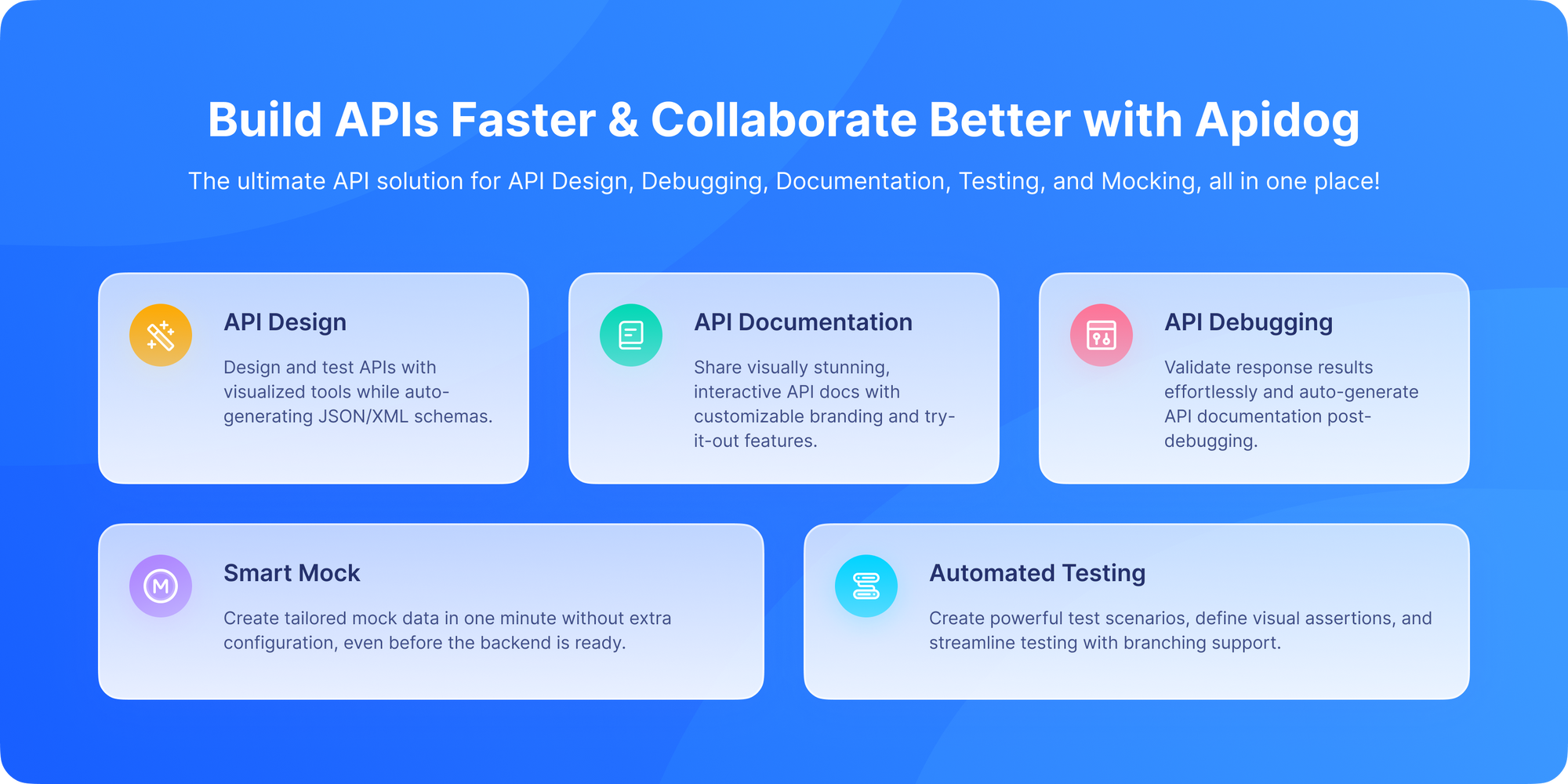When working with APIs, one of the trickiest challenges is making sure that a request isn't processed multiple times, especially in scenarios involving payments, reservations, or other critical operations. Ensuring that a request is processed exactly once can be tricky. Alright, let's set the scene. You're finally checking out on your favorite online store. You've found the perfect thing, filled your cart, and painstakingly entered your credit card details. You hit that beautiful "Complete Purchase" button with a satisfying click. And then... nothing. The page hangs. Spins. Times out.
Ugh. That's a nightmare for both the user and the developer.
So, what do you do? You obviously don't want to double-click and risk buying two of everything. But you also really want that thing you just bought! You nervously hit refresh or go back and try again. Your heart is pounding. "Am I about to get charged twice?".
This, my friend, is exactly the kind of disaster that an idempotency key is designed to prevent. It’s a superhero cape for your API requests, ensuring that even if things go haywire, you don't end up with duplicate charges, two of the same user accounts, or a dozen identical support tickets. But what exactly is an idempotency key? Why is it important, and how can developers use it to build safer, more reliable APIs?
This blog post will explain idempotency keys in a clear, conversational tone, starting from the basics and moving into practical advice. If you're someone who works with APIs, whether building, testing, or designing them, you need a tool that makes concepts like idempotency easy to handle. Download Apidog for free; it's an incredible all-in-one API platform that simplifies building, testing, and managing robust APIs, making sure your endpoints are as resilient and reliable as they can be.
Now, let's unravel this seemingly complex term into something simple and powerful. Keep reading to become an idempotency key expert!
Want an integrated, All-in-One platform for your Developer Team to work together with maximum productivity?
Apidog delivers all your demands, and replaces Postman at a much more affordable price!
Let's Start With the Big Word: What Does "Idempotent" Even Mean?
First things first, let's tackle the jargon. "Idempotent" sounds like a term a scientist would use to describe a new type of polymer, but its concept is surprisingly straightforward.
In APIs and computer science, an operation is called idempotent if running it multiple times produces the same result as running it once.
Think about it like a light switch. Flipping an "on" switch from the "off" position turns the light on. If you flip the "on" switch ten more times, what happens? The light stays on. The result doesn't change after the first successful operation. That’s idempotency.
Conversely, a non-idempotent operation is like asking a vending machine for a can of soda. If you press the button once, you (hopefully) get one soda. If the machine seems stuck and you press the button again, you might just get two sodas and be charged for both! The second operation had an additional effect.
HTTP Methods and Idempotency
You might already be familiar with this concept through basic HTTP methods:
GET,HEAD,PUT,DELETE: These are generally considered idempotent. Requesting a resource (GET), updating a resource with specific data (PUT), or deleting a resource (DELETE) should produce the same outcome whether you do it once or one hundred times (assuming no other operations interfere in between).POST: This is the classic non-idempotent method. EachPOSTrequest typically instructs the server to "create something new." If you send the samePOSTrequest twice, you’ll likely create two separate, identical resources like two orders, two users, or two transactions.
So, the inherent problem is: how do we safely retry a non-idempotent POST request (like charging a credit card) without accidentally duplicating the action? This is where our hero, the idempotency key, enters the story.
What Exactly Is an Idempotency Key?
An idempotency key is a unique, client-generated value that you send along with a non-idempotent API request (usually a POST or sometimes a PATCH). It acts like a unique label for that specific intent or action you want the server to perform.
The server uses this key to remember whether it has already seen and successfully processed a request with that exact same label.
Here’s the simplest way to think about it: It's a receipt number for an operation you asked to perform. Think of it like a special receipt number when you place an order online. If your order request accidentally gets sent twice, the server recognizes the receipt number and only processes your order once: no repeated charges, no duplicated shipments.
Let's break down the typical flow:
- You Generate a Key: Before making a critical API call (e.g.,
POST /v1/charges), your application generates a unique string. This could be a UUID, a GUID, or any other random, sufficiently long, and unique string.ik_4h2d8f9j3n1m5c7x0z2v6b8qis a common example. - You Send the Key: You include this key in the header of your HTTP request. It's commonly sent in a header like
Idempotency-Key: ik_4h2d8f9j3n1m5c7x0z2v6b8q. - The Server Checks Its Ledger: Upon receiving the request, the server's first job is to check its records (often a temporary cache or database) to see if it has already processed a request with that exact same
Idempotency-Key. - The Magic Happens:
- Case 1: Key NOT Found. This is a brand new request! The server processes the charge, creates the order, or whatever the action is. Before responding to you, it stores the successful response (or just the fact that it succeeded) against that idempotency key in its ledger. It then sends the success response back to you.
- Case 2: Key IS Found. The server has already seen this key and successfully processed the request. Instead of processing the payment again, it simply looks up the previous response it stored and sends that exact same response back to you. Your client gets a successful 200 OK response with the details of the original, already-completed transaction not a new one.
This entire mechanism ensures that no matter how many times you retry the same request (with the same key), the backend action is only performed once.
Technically, the idempotency key is sent as part of the HTTP request (often in a header called Idempotency-Key), and the server keeps track of these keys along with the responses they generated. So if it receives a request with a key it has already processed, it just returns the saved response instead of running the operation again.
Why Are Idempotency Keys So Incredibly Important?
We've touched on the "what," but the "why" is where the real value lies. Implementing idempotency keys isn't just a nice-to-have; for any serious API handling money, state, or important data, it's an absolute necessity.
1. Handling Network Uncertainty Like a Pro
The internet is a messy, unreliable place. Connections drop, packets get lost, and timeouts happen. It’s not a question of if a request will fail to get a response, but when. Without idempotency keys, your only safe option on a timeout is to... do nothing? But what if the request actually made it to the server and the failure was just in the response coming back to you? If you don't retry, the order might not go through. If you do retry, you might create a duplicate.
Idempotency keys solve this dilemma perfectly. You can retry with confidence. If the first request succeeded, the retry will just give you the original response. If it truly failed, the retry will process it for the first time.
2. Preventing Nightmarish Duplicate Charges
This is the most critical use case. In financial technology, duplicate transactions are a direct path to customer support hell, chargebacks, and lost trust. An idempotency key ensures that a customer's card is charged exactly once for a given purchase intent, even if their browser sends the request multiple times due to a shaky connection or an impatient user.
3. Creating a Predictable and Reliable Developer Experience
If you're providing an API for other developers to use (a public API), idempotency keys are a gift to your consumers. They make your API resilient and safe to use. Developers don't have to implement complex, application-level logic to track whether a request might have already been sent. They can just retry any failed request with the same key, and your API handles the complexity. This reduces their anxiety and their code's bug surface area.
4. Ensuring Data Consistency and Integrity
Beyond payments, this applies to any creation action. Imagine a user clicking "Submit" on a form multiple times. Without an idempotency key, you might create three identical support tickets, alienating the user and wasting your team's time. With a key, the second and third submissions would just return the first ticket's ID, keeping your data clean and consistent.
This is crucial in:
- Financial transactions (payments, transfers)
- Booking systems (hotels, flights, events)
- Order processing (e-commerce checkouts)
- Operations that modify data where duplication is harmful
In such contexts, idempotency keys help maintain data integrity, prevent duplicates, and improve user trust.
Idempotency Key vs. Other IDs: What's the Difference?
It's easy to confuse an idempotency key with other unique identifiers floating around in API land. Let's clear that up.
| Feature | Idempotency Key | Primary Key (e.g., Database ID) | Request ID / Correlation ID |
|---|---|---|---|
| Who Generates It? | Client (Your code) | Server (The database) | Either, but often the client |
| Purpose | To uniquely identify an action or intent | To uniquely identify a resource (e.g., ord_12345) |
To uniquely identify a request for tracing |
| Scope | Tied to a specific logical operation | Tied to a specific data record | Tied to a specific HTTP call |
| Persistence | Short-lived (e.g., 24 hours). Deleted after. | Permanent. Lives for the life of the resource. | Usually ephemeral, for the life of a request chain. |
| Example | ik_4h2d8f9j3n1m5c7x0z2v6b8q |
ch_1Lp3a2FnGm2jLk4g5h6Jk7lM |
req_8f0d6b12a5c |
How to Generate and Use Idempotency Keys
- Generating Keys: Generally, clients generate random unique strings using UUIDv4 or other secure random generators.
- Sending Keys: Add an
Idempotency-Keyheader to the API request. For example:textIdempotency-Key: 123e4567-e89b-12d3-a456-426614174000 - Server Side Storage: The server should store keys and their associated responses, maybe in a cache or database.
- Validating Requests: The server should also check if the incoming request parameters match original requests to prevent misuse of keys with different payloads.
Real-World Examples of Idempotency Keys
Let’s look at where you’ll encounter idempotency keys in practice:
- Payment APIs (Stripe, PayPal, etc.): When creating a payment, an idempotency key prevents duplicate charges.
- Booking Systems: Hotels or airlines prevent duplicate bookings if a request is retried.
- Messaging Systems: When publishing a message, idempotency ensures the same message isn’t delivered multiple times.
- Order Management: E-commerce checkout flows rely on idempotency to avoid creating duplicate orders.
Without idempotency, any retry could lead to chaos extra charges, double bookings, or broken user trust.
Benefits of Using Idempotency Keys
The advantages of idempotency keys go beyond preventing duplicate charges. Let’s break them down:
- Improved reliability: Clients can safely retry requests without worrying about duplicates.
- Better user experience: No double payments or duplicate records.
- Consistency in distributed systems: Critical for microservices that may fail or retry.
- Reduced customer support issues: Fewer refund requests and manual fixes.
- Predictable error handling: Clients can trust that retries won’t break logic.
In short, idempotency keys make APIs more robust, predictable, and user-friendly.
Challenges and Pitfalls of Idempotency Keys
Of course, implementing idempotency keys isn’t all sunshine and rainbows. Here are some challenges:
- Storage overhead: The server must store keys and responses somewhere (cache, DB).
- Expiry management: How long should the server remember keys? (Hours? Days?)
- Concurrency issues: Handling simultaneous requests with the same key can be tricky.
- Design complexity: Some operations are harder to make idempotent (like streaming or bulk updates).
- Partial failures: If a backend operation fails midway, deciding what to return for future retries gets complex.
These challenges mean that while idempotency keys are powerful, they require careful planning.
Best Practices and Common Pitfalls
So, how do you implement idempotency keys the right way? Here are some best practices.
✅ Do:
- Use a Version 4 (Random) UUID: It's the safest bet for uniqueness.
- Make Keys Long and Unpredictable: This prevents malicious actors from guessing keys.
- Keep it Server-Side Stateful: The server must track the state of the key (processed/not processed).
- Set a Reasonable Expiry Time: Store keys for a sensible duration (e.g., 2-72 hours). You don't need to remember a payment intent from months ago.
- Include the Key on Every Retry: The entire system relies on sending the exact same key for the exact same logical operation.
❌ Don't:
- Reuse a Key for a Different Request: Changing any parameter in the request body (amount, product, customer ID) but using the same key leads to undefined behavior. The server will return the old response for the new request! A key is for one unique action.
- Use Incremental IDs or Timestamps: These are not guaranteed to be unique and are very easy to collide.
- Forget to Handle the "No Key" Case: Your API should still function if a key isn't provided, even if it means potentially operating in a non-idempotent way for that single request.
- Ignore Idempotency for GET Requests:
GETrequests should be idempotent by nature. Adding a key to them is unnecessary and wasteful.
How Apidog Can Help You Master Idempotency

Working with these concepts is far easier with a powerful API tool. Building and maintaining idempotent APIs requires thorough testing. This is where Apidog shines. Apidog is an integrated API collaboration platform that helps you design, develop, test, and mock your APIs all in one place, including requests with idempotency keys.
When you're designing an API endpoint that requires idempotency, Apidog makes it simple:
- Define Custom Headers: Easily add an
Idempotency-Keyheader to your requests in the interface. - Automate Key Generation: Use Apidog's pre-request scripts to automatically generate a new UUID for each request, ensuring you're always testing with a unique key.
- Test Retry Behavior: Quickly simulate failed requests and retries with the same key to verify that your backend is correctly returning the cached response and not performing the action again.
- Document for Your Team: Clearly document that your endpoint requires an idempotency key, making it easy for your entire team or API consumers to understand and implement correctly.
Using a tool like Apidog transforms idempotency from a complex backend concept into a manageable, testable, and well-documented feature of your API.
Wrapping Up: Idempotency is a Superpower
So, what is an idempotency key? It’s a unique identifier attached to requests that ensures they are processed only once, no matter how many times they are sent. The idempotency key isn't just a piece of tech jargon; it's a fundamental building block for creating robust, reliable, and trustworthy APIs. It’s the solution to the inherent uncertainty of networks and the impatience of users. Idempotency keys are especially critical in scenarios like payments, orders, and bookings anywhere duplicates would cause big problems. They differ from idempotent operations, but both aim to make APIs more reliable and predictable.
By implementing and using idempotency keys, you move from hoping your requests work to knowing they will, even when things go wrong. You prevent duplicates, protect your revenue, and provide a stellar experience for anyone using your API. While implementing them comes with challenges (like storage and concurrency), the benefits safety, consistency, and better UX far outweigh the downsides.
The next time you hit "submit" on a important form or API call and your internet hiccups, you can rest a little easier knowing that a well-designed system on the other end is using an idempotency key to have your back.
And remember: theory alone isn't enough. You'll need to test your idempotency implementation thoroughly. That's where tools like Apidog step in, giving you the ability to mock, test, and automate API validation.



